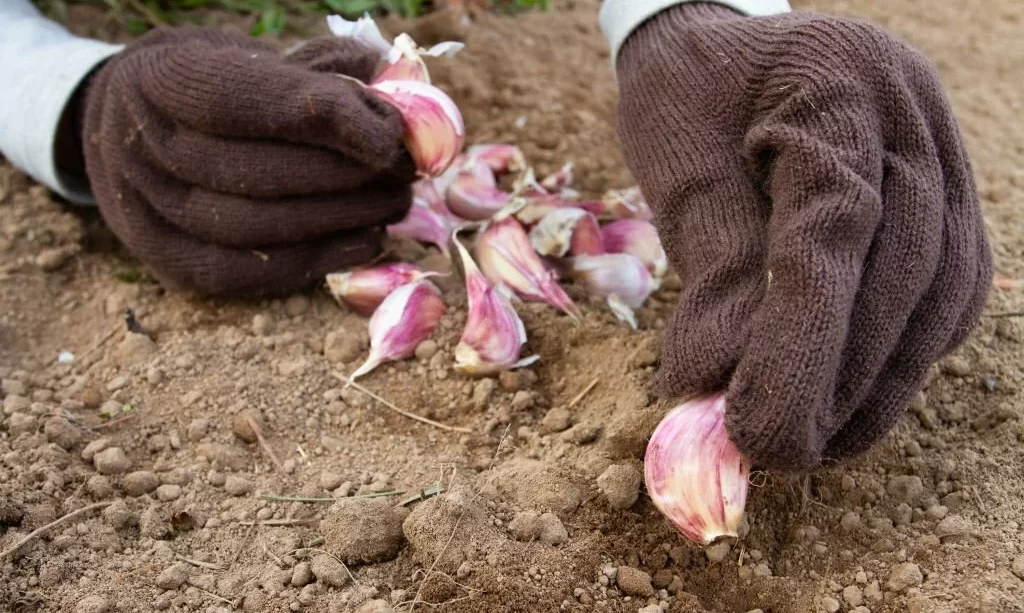Garlic, with its robust flavor and culinary versatility, is a prized addition to any home garden. However, achieving a thriving garlic crop in Zone 6 requires precise timing and variety selection. This article serves as your guide to growing garlic in this particular hardiness zone. We’ll explore the nuances of Zone 6’s climate, the garlic varieties best suited to these conditions, and the significance of both factors in ensuring a successful garlic harvest.
Zone 6 Climate
Zone 6, as defined by the USDA Hardiness Zones, represents specific geographical regions with distinct climate characteristics. In the context of Zone 6, it’s essential to comprehend the climate you’ll be working with. Zone 6 typically experiences cold winters, with temperatures ranging from -10°F to 0°F (-23°C to -18°C). The average last frost date in spring can vary, but it often falls between late April and early May, while the first frost date in the fall usually occurs from late September to early October.
Understanding these climate details is crucial when planning your garlic planting. Garlic needs a period of vernalization, a cold treatment that promotes bulb formation. The cold winters of Zone 6 make it an ideal location for growing garlic. However, it’s equally vital to choose the right garlic variety to complement these conditions.
Garlic Varieties Suitable for Zone 6
In Zone 6, garlic varieties fall into two primary categories: hardneck and softneck. The choice of variety plays a significant role in determining when to plant.
Hardneck Garlic: Hardneck garlic varieties, like ‘German Extra Hardy’ and ‘Purple Stripe,’ are well-suited to Zone 6’s cold winters. They typically produce larger cloves and are known for their vibrant, rich flavor. Hardneck garlic varieties thrive when planted in the fall, allowing them to benefit from the required cold exposure for proper bulb development.
Softneck Garlic: Softneck garlic, such as ‘Inchelium Red’ and ‘Silverskin,’ is more adaptable to varying climates. While they can be planted in the fall for a spring harvest, they are also suitable for spring planting, making them a versatile choice for Zone 6 gardeners. However, it’s crucial to choose a late-season softneck variety if you opt for spring planting, as they typically require a more extended growing season.
Selecting the right garlic variety tailored to your preferred planting time and local climate conditions is a fundamental step in growing a successful garlic crop in Zone 6.
Fall Planting
For Zone 6 gardeners, fall planting is the traditional and favored method for growing garlic. Fall planting allows garlic to take full advantage of Zone 6’s cold winters, promoting healthy bulb development. Here’s what you need to know about fall planting:
- Ideal Timing: The recommended window for fall planting in Zone 6 typically falls between late September and early November. Planting during this period allows garlic to establish roots before the cold winter sets in.
- Cloves and Spacing: When planting in the fall, separate garlic bulbs into individual cloves and plant them about 2 to 4 inches deep in well-drained soil. Space the cloves about 4 to 6 inches apart in rows with 8 to 12 inches between them.
- Mulching: After planting, consider adding a layer of mulch, like straw or leaves, to help regulate soil temperature and protect the garlic from severe temperature fluctuations.
Spring Planting
While fall planting is the primary method in Zone 6, some gardeners may opt for spring planting, especially for late-season garlic varieties. Here’s what you need to know about spring planting:
- Timing: Spring planting typically takes place from March to early April. It’s crucial to monitor local conditions and ensure the soil is workable before planting.
- Variety Selection: When spring planting, choose late-season garlic varieties that have a shorter growth cycle. These varieties are better suited to the shorter growing season before summer heat sets in.
- Planting Process: Plant individual cloves about 2 inches deep, ensuring they are spaced appropriately. Spring-planted garlic won’t have as much time to develop as fall-planted garlic, so optimizing the growing conditions is essential.
Preparing the Garlic Bed
Properly preparing the garlic bed is essential for successful garlic cultivation in Zone 6. Here are the key steps to consider:
- Soil Testing: Before planting, conduct a soil test to determine the soil’s pH and nutrient levels. Garlic prefers well-drained soil with a pH range of 6.0 to 7.0.
- Amending Soil: Based on the soil test results, amend the soil with organic matter like compost. This enhances soil fertility and structure, creating a conducive environment for garlic growth.
- Proper Drainage: Ensure that the planting site has good drainage to prevent waterlogging, which can lead to rot issues in garlic. Raised beds or well-drained soil can help with this.
- Location and Bed Size: Choose a sunny location with at least six hours of sunlight daily. Plan the size of your garlic bed based on the number of garlic bulbs you intend to plant. Adequate spacing between rows is essential for proper growth and airflow.
By taking these steps to prepare the garlic bed, you set the stage for a successful garlic crop in Zone 6, whether you choose fall or spring planting, or even a combination of both, depending on your preferred garlic varieties.
Planting and Caring for Garlic
Planting and caring for garlic in Zone 6 require attention to detail to ensure a bountiful harvest:
- Planting Depth and Spacing: Plant individual cloves approximately 2 to 4 inches deep, ensuring they are pointed upwards. Space the cloves 4 to 6 inches apart within rows and allow 8 to 12 inches between rows for proper bulb development.
- Watering: Garlic needs consistent moisture, especially during the growing season. Water when the soil begins to dry out, providing about 1 inch of water per week. Be cautious not to overwater, as garlic can be susceptible to rot in soggy conditions.
- Mulching: Maintain a layer of mulch, such as straw or leaves, around the garlic plants to conserve soil moisture and suppress weed growth. This mulch layer also aids in temperature regulation.
- Fertilization: Apply a balanced fertilizer in the spring when green shoots emerge. Avoid high-nitrogen fertilizers, as they can encourage excessive leaf growth at the expense of bulb development.
- Weeding: Regularly weed your garlic bed to reduce competition for nutrients and ensure garlic plants can access the resources they need for robust growth.
- Scaping: Hardneck garlic varieties may produce scapes in late spring. These are curly flower stems that should be removed to direct energy toward bulb development. Scapes are edible and can be used in cooking.
- Pest and Disease Management: Keep an eye out for common garlic pests like aphids and nematodes. Disease prevention measures, such as proper spacing and good airflow, can help reduce issues like white rot and rust.
- Will Not Burn
- Great for all plants
- Deodorized with Natural Wintergreen
- 5-1-1 fertilizer is an excellent source of organic plant nutrients
- Fish Fertilizer
Harvesting and Storing Garlic
Harvesting garlic at the right time is crucial for optimal flavor and storage:
- Timing: Garlic is typically ready for harvest in Zone 6 in early to mid-summer, with hardneck varieties often ready a bit earlier than softneck varieties. Harvest when about one-third to one-half of the leaves have turned yellow or brown.
- Harvesting: Gently loosen the soil around each bulb using a garden fork. Lift the bulbs from the ground and allow them to cure by drying in a shaded, well-ventilated area for a few weeks.
- Storing: After curing, store garlic in a cool, dry place with good air circulation. Braiding softneck garlic can be a decorative and space-saving storage solution.
Conclusion
In conclusion, growing garlic in Zone 6 can be a rewarding and flavorful experience with the right planning and care. Understanding the climate and selecting suitable garlic varieties are fundamental steps in your garlic journey. Whether you choose fall or spring planting, or a combination of both, proper bed preparation, diligent care, and timely harvesting ensure the best results. Enjoy the satisfaction of homegrown garlic, enhancing your culinary creations with its aromatic and robust flavor.






